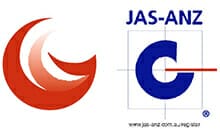In the world of manufacturing, the choice of process can greatly influence the properties, performance, and overall quality of the final product. Two such processes, welding and custom steel forging, are instrumental in creating durable and efficient parts across various industries. Understanding the basics of each, including their unique advantages and disadvantages, can aid in making informed decisions for your manufacturing needs.
Welding vs forging basics
Welding is a fabrication process that involves joining two or more parts together by melting the areas of contact and adding a filler material to form a joint. The parts usually consist of metal, and the joints formed are as strong as the material from which the parts are made.
On the other hand, custom steel forging is a process that involves shaping metal, particularly steel, using localised compressive forces. The force applied can deform the steel into a desired three-dimensional shape while maintaining its strength.
Disadvantages of welding in industrial applications
While welding is an invaluable process in many industrial applications, it is not without its limitations. Several factors can make welding less suitable for certain projects or introduce challenges that need to be managed effectively. Below are some of the key limitations of welding in industrial applications.
Structural integrity concerns
In critical applications, such as those in aerospace, automotive, or heavy-duty machinery, the structural integrity of welded joints is of utmost importance. Failures at these joints can lead to catastrophic results, including equipment breakdown, costly repairs, and safety risks.
Welds can be prone to various defects, such as cracks, porosity, lack of penetration, or incomplete fusion, all of which can compromise the structural integrity of the joint. Furthermore, the heat-affected zone (HAZ) near the weld can undergo changes in its microstructure, potentially weakening the material or making it more susceptible to corrosion.
Therefore, non-destructive testing methods, such as ultrasonic testing or radiographic testing, are often employed to inspect welds and ensure their integrity, particularly in critical applications. However, these tests can increase the cost and time required for the project.
Labour-intensiveness
Welding can be a labour-intensive process that requires skilled operators. The cost of training and maintaining a team of experienced welders can be significant. Additionally, welding equipment, particularly for specialised welding processes, can be expensive to acquire and maintain.
Project setup, alignment, and the actual welding process can be time-consuming, especially for complex or large-scale projects. Any necessary post-weld treatments, such as stress relieving or finishing, can add further to the labour and costs. This makes welding a relatively slow process that is not ideal for high-volume orders.
Defects and material wastage
As mentioned before, welding can be prone to various defects. These defects, if not detected and remedied, can lead to failures and may require the piece to be reworked or even scrapped, leading to material wastage and increased costs.
The nature of welding also means that there is often some degree of material loss due to spatter or the need for post-weld grinding or machining to achieve the desired finish or dimensions. These factors can reduce material usage efficiency and contribute to project costs.
Environmental Limitations
Welding can be challenging in extreme conditions or harsh environments. For example, welding outdoors can be affected by wind, which can disrupt the shielding gas in processes like MIG or TIG welding, potentially leading to weld defects.
Underwater welding or welding in high or low-temperature environments also requires special equipment, techniques, and highly trained operators, all of which can increase project complexity and costs.
Advantages of custom steel forging in industrial applications
This process, which involves the use of heat and pressure to shape the metal, offers a host of advantages over welding, particularly in terms of strength, cost-effectiveness, design flexibility, and reliability. Below are some of the key advantages of custom metal forging in industrial applications.
In a nutshell, forging provides a deformed part to a desired shape, as one integral part from the same material stock. This process imparts continuous grain flow which follows the external shape of the forged part.
The same welded part required joining of two or more parts by using filler material. Such a process results in discontinuities where the weld has occurred, and there is no continuation of the grain structure as is the case in forging.
If a particular size and geometry of parts lend themselves to the process of forging, then this is always the preferred option, all other things being equal.
Superior strength and durability
One of the primary advantages of custom steel forging over welding is the enhanced strength and durability it offers. During the forging process, the metal’s grain structure is deformed and aligned to the shape of the part, which significantly strengthens the material, particularly in areas of high stress.
Additionally, because a forged part is formed from a single piece of metal, there are no joint areas that could potentially be weak points, as can be the case with welded parts. The result is a product that is extraordinarily tough, resistant to impact and fatigue, making it a superior choice for heavy-duty and high-strength applications.
Cost-effectiveness
While the initial tooling cost for custom steel forging can be high, it becomes incredibly cost-effective when producing high volumes. This is because the same tooling can be used to produce a large number of parts.
Additionally, the forging process is efficient in terms of material usage. Unlike welding, where there can be material loss due to spatter or post-weld machining, forging can achieve near-net shapes that require minimal finishing work, reducing material wastage and associated costs.
Complex shapes and designs
Despite the common perception, forging isn’t limited to simple, heavy-duty parts. With modern techniques and equipment, custom steel forging can achieve intricate shapes and precise designs.
Processes like closed-die forging (also known as impression-die forging) can produce complex shapes with a high degree of accuracy. This can reduce or even eliminate the need for additional machining, saving time and costs.
Reliability and critical applications
In applications where failure is not an option, such as aerospace, automotive, or heavy machinery, the reliability of forged steel parts is a significant advantage. The superior strength, durability, and absence of potential weak points (such as weld seams) make forged products more reliable under demanding conditions.
In these critical applications, the slightly higher cost of forged components is often greatly outweighed by the costs, both financial and in terms of safety, associated with potential component failure.
How Greg Sewell Forgings can help
At Greg Sewell Forgings, we have a legacy of delivering high-quality custom steel forged components. Our experienced team is ready to assist you in every step of your manufacturing process, from initial design to final production. Don’t settle for anything less than the best for your project. Choose custom steel forging for superior performance and reliability.
Contact us today, and let’s bring the strength of steel forging to your next project!





